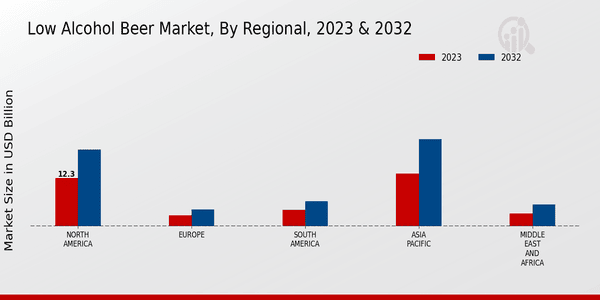Low Alcohol Beer Market Summary
The Global Low Alcohol Beer Market is projected to grow from 18.85 USD Billion in 2024 to 36.22 USD Billion by 2035, indicating a robust expansion.
Key Market Trends & Highlights
Low Alcohol Beer Key Trends and Highlights
- The market is expected to achieve a compound annual growth rate (CAGR) of 6.12 percent from 2025 to 2035.
- By 2035, the market valuation is anticipated to reach 36.2 USD Billion, reflecting increasing consumer interest.
- in 2024, the market is valued at 18.85 USD Billion, showcasing its current significance in the beverage industry.
- Growing adoption of low alcohol beer due to health-conscious consumer trends is a major market driver.
Market Size & Forecast
| 2024 Market Size | 18.85 (USD Billion) |
| 2035 Market Size | 36.22 (USD Billion) |
| CAGR (2025-2035) | 6.12% |
Major Players
Heineken N.V., Anheuser-Busch InBev, The Boston Beer Company, Inc, Lagunitas Brewing Company, Kirin Holdings Company, Limited, Sierra Nevada Brewing Co, New Belgium Brewing, Deschutes Brewery, Sapporo Holdings Ltd, Carlsberg, Suntory Holdings Limited, Tsingtao Brewery Group Co., Ltd., Diageo, Asahi Group Holdings, Ltd., Molson Coors Beverage Company


















